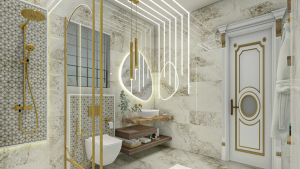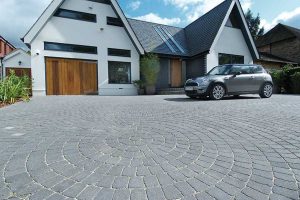Designing Spaces for Extended Family and Aging Parents
3 min read
As families grow and lifestyles evolve, the need for versatile, functional, and accommodating living spaces becomes increasingly important. Whether you’re planning for aging parents to move in or creating areas that welcome extended family members for extended stays, thoughtful home design can make all the difference. In this guide, we explore practical tips and innovative ideas to transform your home into a haven that caters to diverse family needs.
Understanding the Needs
Designing for extended family members and aging parents requires a deep understanding of their unique needs and preferences. Aging parents, for instance, may benefit from spaces that are easily accessible, safe, and comfortable. Meanwhile, areas for extended family members should offer privacy without compromising on the warmth and hospitality of your home.
Key Design Considerations
- Accessible Living Spaces: Incorporate elements like ramps, wider doorways, and grab bars to ensure accessibility for aging parents. Consider single-story living arrangements to minimize mobility challenges.
- Private Retreats: Designing separate living quarters or guest suites allows extended family members to enjoy privacy while feeling part of the household. This can include a bedroom, bathroom, and a small living area.
- Multifunctional Rooms: Optimize space by creating multifunctional rooms that can serve different purposes. For example, a home office can double as a guest room with a pull-out sofa or a Murphy bed.
- Safety and Comfort: Install features such as non-slip flooring, well-lit pathways, and easy-to-reach storage solutions to enhance safety and comfort for all family members, especially aging parents.
- Technology Integration: Incorporate smart home technology to simplify everyday tasks and enhance convenience for everyone in the household. This can include automated lighting, temperature control, and voice-activated assistants.
Stylish and Functional Design Ideas
- Open Concept Layouts: Create open spaces that foster interaction and connectivity among family members. This layout not only enhances the flow of the home but also makes it easier to navigate, especially for elderly family members.
- Universal Design Principles: Embrace universal design principles that cater to people of all ages and abilities. This includes adjustable countertops, lever-style door handles, and walk-in showers with seating options.
- Natural Lighting: Maximize natural light to create bright and inviting spaces. Consider installing larger windows, skylights, or sun tunnels to reduce dependency on artificial lighting and improve overall well-being.
- Outdoor Living Spaces: Extend your living space outdoors with accessible decks, patio areas, or garden paths. Outdoor spaces can serve as peaceful retreats or social gathering spots for the entire family.
- Storage Solutions: Ample storage is essential for maintaining a clutter-free environment. Incorporate built-in cabinets, shelving units, and under-bed storage to maximize space without compromising on style.
Budget-Friendly Renovation Tips
- Prioritize Needs: Identify essential renovations based on your family’s immediate needs and budget constraints. Focus on high-traffic areas and critical safety upgrades first.
- DIY Projects: Save costs by tackling simple DIY projects such as painting walls, assembling furniture, or updating hardware fixtures. However, complex renovations like electrical or plumbing work should be handled by professionals.
- Energy-Efficient Upgrades: Invest in energy-efficient appliances, windows, and insulation to reduce utility bills and create a more sustainable living environment for your family.
- Consult with Experts: Seek guidance from interior designers, architects, or contractors specializing in aging-in-place design and multi-generational homes. They can provide valuable insights and ensure that your renovation meets safety standards and aesthetic preferences.
Conclusion
Designing spaces for extended family and aging parents requires careful planning, creativity, and a commitment to meeting diverse needs. By integrating thoughtful design principles, practical solutions, and a touch of personal style, you can create a home that fosters harmony, comfort, and lasting memories for every member of your family. Whether you’re embarking on a major renovation or making incremental improvements, remember that the goal is to create a welcoming and functional environment where everyone feels at home.



